Hidden away in an old girls dormitory we met with , a recent MFA Painting graduate at Pratt. During our visit we talked about his journey into painting from architecture, the process he uses in his work and the influence the studio has on it. Nick currently lives and works in New York.
F: I know your background is in architecture. Can you talk about how why you decided to enter painting?
NN: I started in Milwaukee at an architecture program, setting up to be an architect and after the first semester, I was like, ‘Yeah, I don’t really care how a building stays together’. I’m more interested in conceptually how these things happen. Then I switched to fine art. I still have a minor in art history and theory and architecture. I figured I might as well just do it. I think a lot about buildings that exist in the world and the idea of them being physical places and then I take them and make them completely not physical and they become this illusion on a 2-D surface. That interests me and also thinking about, specifically now, buildings Communist and Fascist architecture. Prisons are really interesting to me. Construction sites are pretty interesting too. So that’s where I’ve been kind of focused recently.
F: In your work, you have these very specific hard edges and in that sense, can you talk about how you went from architecture to painting in your work?
NN: This painting and that painting and I have a lot of other ones in the kitchen. They’re taken from the neighborhood. These are brownstone façade as you would see them as you’re walking down the street. What it is, is just a section cut of just the façade and then what I do is, I extract them and I connect them. In that piece, they’re more specifically the frontal piece of this and they do look really hard edge and pristine but I don’t use tape. I hand paint them. For me, it’s really important because, I think, its that futility of the mask. How the mask of the building are the details of the façade and how upon closer inspection, that façade is really deteriorating because of the weather and the things that happen to it over the years. That’s why I don’t use tape.
F: So its about this imperfection from the hand and the obvious materiality of the paint.
NN: Yeah, from far away it does look perfect but upon closer inspection, you can see the build up of paint where I’ve really tried to get that edge to be as crisp as I can or where I might’ve missed the paint because I always start with an underpainting of bright orange or yellow. Its always the complement of the primary color that I’m using. This painting is purple so I used yellow as the base. Not that it does so much because it gets completely covered but it definitely influences the colors that come on top of the surface.
F: Is it oil based or acrylic?
NN: Its acrylic.
F: You even see these subtle shifts in hue but not really in tone. So that gives it that fuzzy look in terms of space. Does that come about naturally or are you very conscious about how the next one is going to be this and the next one is another hue shifted?
NN: I put down a color. I see what it looks like and I’ll mix another color from the color that I’ve already used and I’ll see like ‘Okay, maybe it should be just a little bit lighter or a little bit darker’. I kind of work that way but then then I also do that thing where I play with making one color look like two colors. So in the center of this painting, the center black is the same black thats on the outside. I’m conscious of that. I’m playing with those sorts of color. The technical things are something thats interesting to me. Specifically when I look at buildings, its more at twilight when the light is hitting them depending on where they are on the block. The light is different but then theres the light that’s being cast from the outside to the inside. There’s this idea of privacy and not privacy. That’s where the colors stem from.
F: In this one, its not as much about the silhouette. It becomes something completely different and it almost becomes unrecognizable. I can’t read where the building is versus the space. Can you talk about that?
NN: This [Façade 12] is a later painting. I was taking the façades and I was starting to connect them and creating large squares so that there would be four façades connected. Where the stairs connect, there would be the upper portion of the cornice. I would start to create these different abstractions with just a variation. Some of the blocks overlap one another and interact. There’s this idea of inside versus outside but then also what shapes are created out of these built shapes so that they create their own spaces. Its a question of what’s positive and what’s negative and what’s inside and what’s outside.
F: Which is going back to that one with the color and the lighting but in this one, it’s more about the shapes and the composition. Now in this one, this is interesting too because its drawn on the wall so its directly referencing space and your studio too.
NN: Its something I’ve wanted to do because these exist in smaller drawings and I have this large wall. I worked for on a wall drawing that she did on the Lower East Side and I was like, “Well, maybe I should try and do a wall drawing’ because I used to make drawings that were pretty large. They were about 7 ft by 10 ft long and I was like, ‘what would happen if I did it directly on the wall’. So, I feel that by doing it on the wall, for me, it has more of a relationship to our body because its starting to get closer to our scale. Obviously it isn’t exactly our scale because I can only go so big in here but I think it opens up a lot of possibilities for me as to the tools that I use and how it interacts with the actual space versus a space on a paper and how the viewer interacts with it. What that relationship is becomes a little bit more visceral than having to imagine being inside one of the smaller drawings.
F: You’re kind of doing it for yourself in a sense because its in your studio.
NN: Yeah, absolutely. And I would be more than happy to do this any other place too but this is the support that I have and this is the space that I can do it in.
F: Its interesting because, getting back to the previous conversation, about how these studios were actually dorms. You’re creating these things in this living, or past living environment and then you’re painting living environments too.
NN: Yeah, I’m actually going to paint this over tomorrow and then do another one because I want to get another one done before I don’t have this studio.
F: These two panels and the drawing too, those are graphite as well?
NN: Yeah, everything is graphite.
F: Do you draw it out first before you paint it?
NN: So, what I do is, I do draw it out. The first layer that I do is obviously gessoing. Then the color ground and then I build up on top of that with a soft pencil because it just mixes into the paint. I don’t have to worry about it coming through and then I paint it. They’re all different. I guess that’s another thing that I didn’t really mention. They look symmetrical but they’re not. Everything is completely different. The space is different. The façades are different. Everything is different.
F: So for this, they’re actually taken from around the neighborhood?
NN: The dark paintings are. They’re from the neighborhood: Bedford-Stuyvesant, Clinton Hill and Fort Greene.
F: But then these, the linear ones are a lot more imaginative.
NN: Those come directly from my head.
F: It seems that its attacking the same thing but from a different kind of point.
NN: Yeah, they have similarities in conceptual issues but I feel like the drawings which I call ‘Constructions’ are speaking to something that’s a little bit different in a way than the paintings.
F: In talking about the support because you’re painting on canvas versus painting on a panel. Is that because you’re doing very linear drawings so you need that surface or…?
NN: I used to draw always on canvas. I would do fine drawings on canvas and then I kept getting questions, ‘why are you drawing on canvas?’ and I was like, ‘well, I like drawing on canvas’. I guess what happened was, I was taken to a place where I really wanted to paint again and I hadn’t painted in 3 or 4 years. I was doing drawings, just constantly doing drawings on all sorts of supports. I didn’t actually think at all about painting the paintings on panel but I felt that these drawings specifically felt like the panel would work for them. I like the fact that the panel, unlike the canvas, because I’m using a hard pencil (I’m using like a 7H pencil), it becomes a little bit incised into the board because it accepts it. If the light is hitting it just right, you can see that there’s these incisures in them. The other thing with the drawings is like the paintings, they look perfect but they aren’t perfect. There’s a lot of overdrawn lines. There’s a lot of erasing marks and I can’t get rid of them because they’re incised.
F: Can you talk about your space a little bit?
NN: This was the second space that I had at Pratt. The first one was also in the dorms and it was a space that was shared between me and five other people which was kind of weird. It was the only studio in the dorms. It was one of the big dorms. It was on the 17th floor, so it was kind of nice to come over here and have a door that I could lock and just be in here. I think this space is really interesting because its kind of the same era of the dark paintings that I’m doing. It has the same sort of old decrepit feeling like the ceiling is falling apart. It has this homey feeling in a weird way.
You can see more of Nick Naber’s work at .

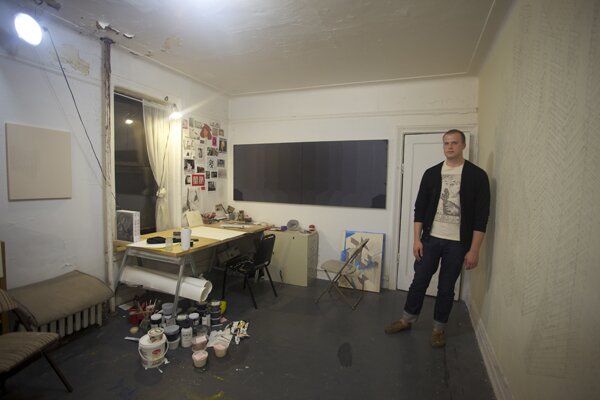
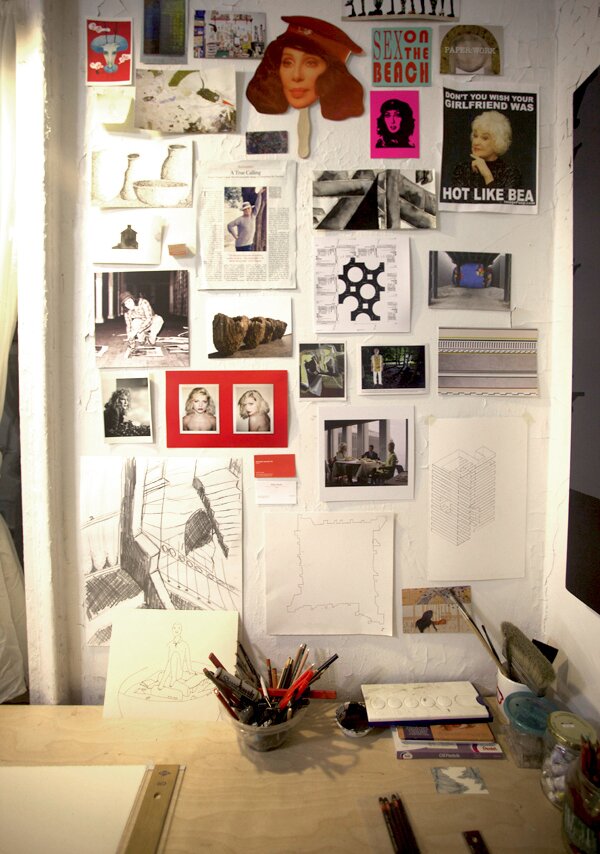
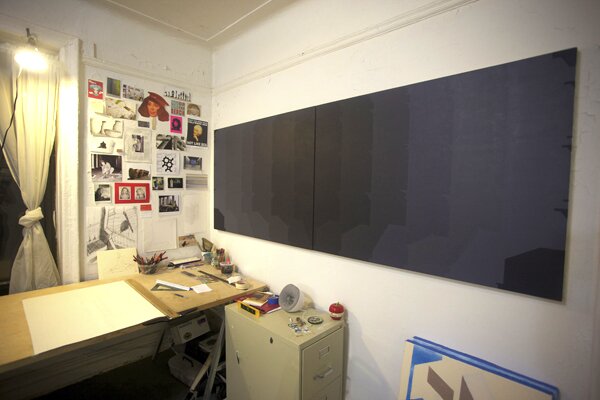


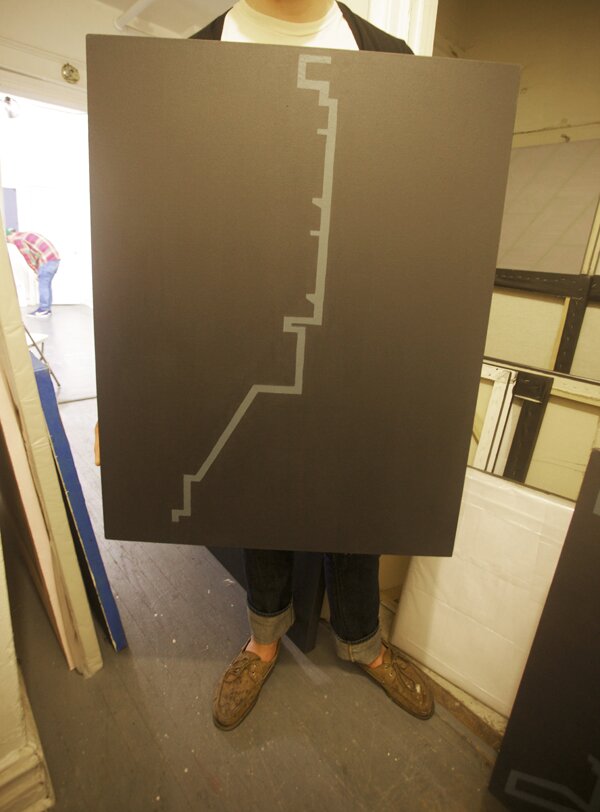
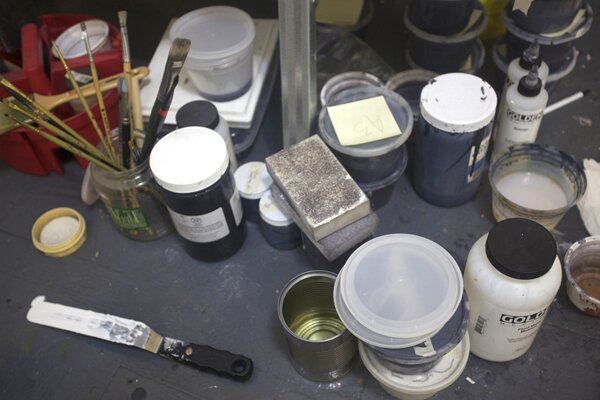
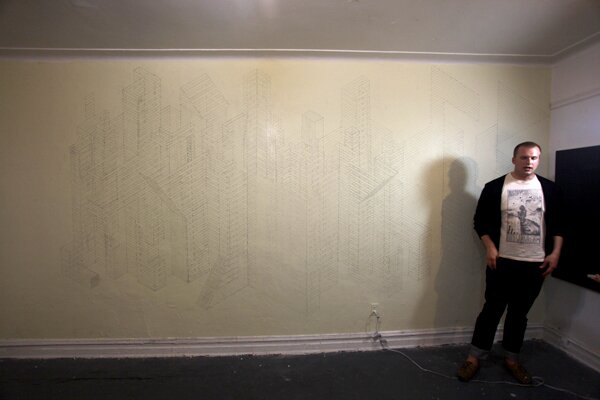

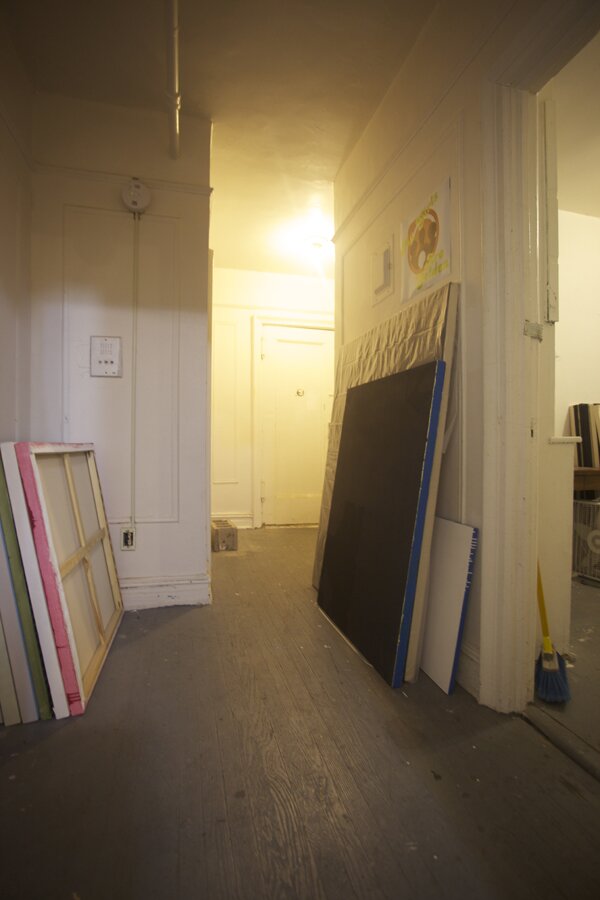
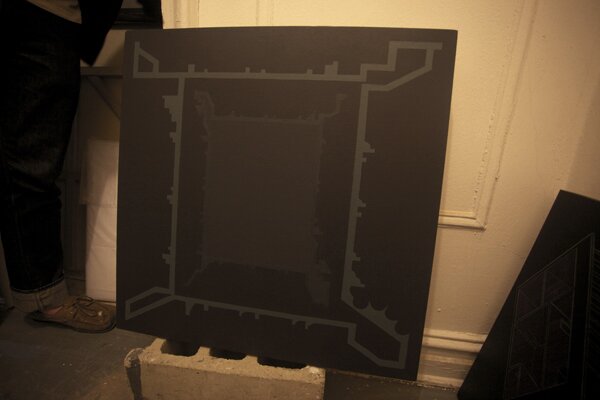
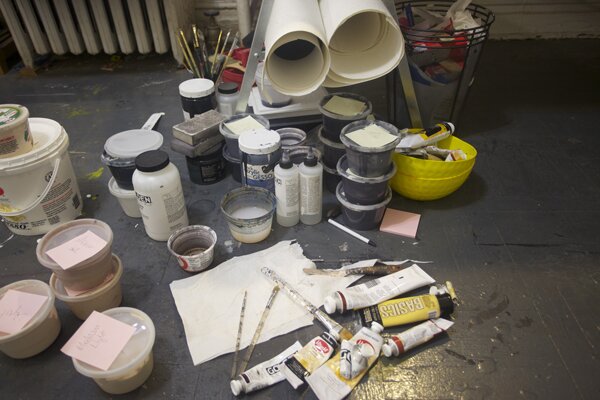

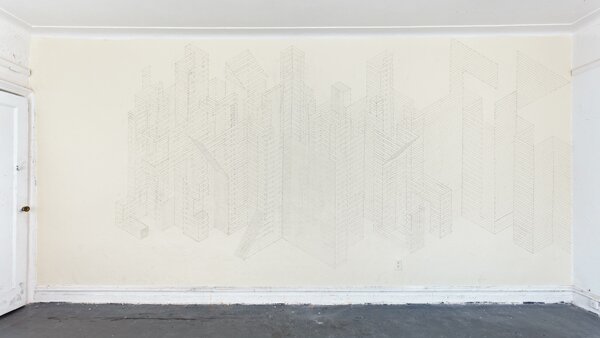




Pingback: Anthony Palocci Jr – Pratt | #ffffff walls